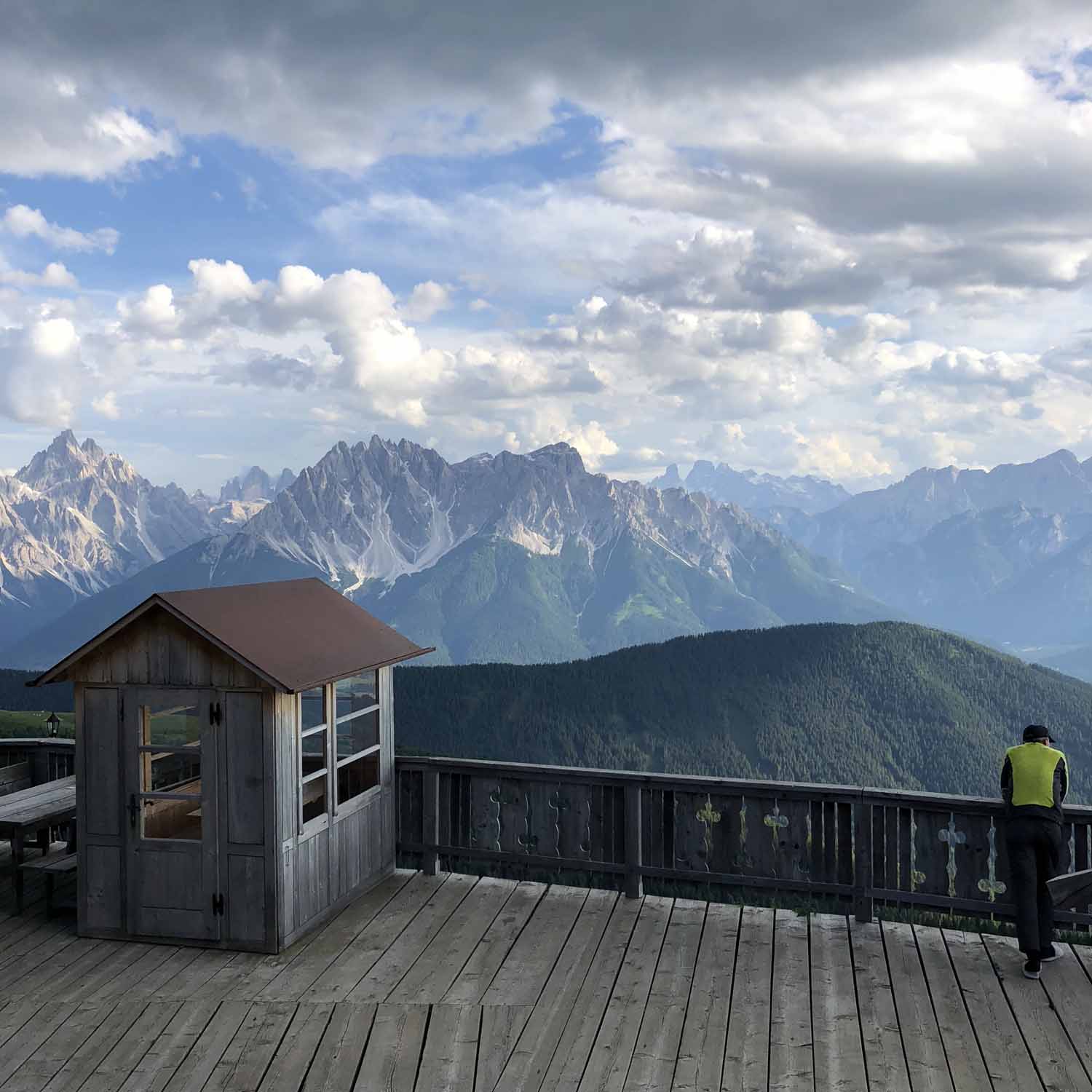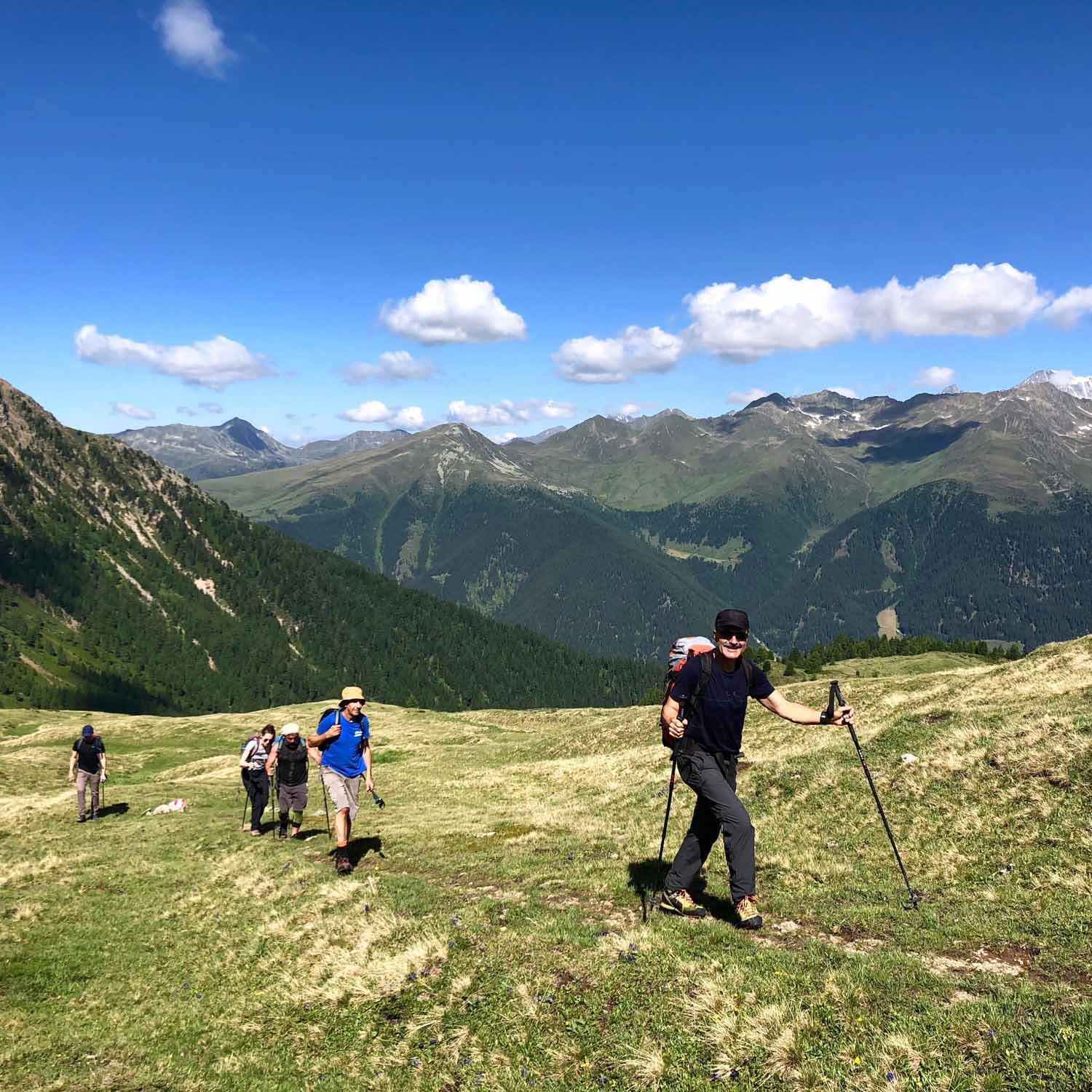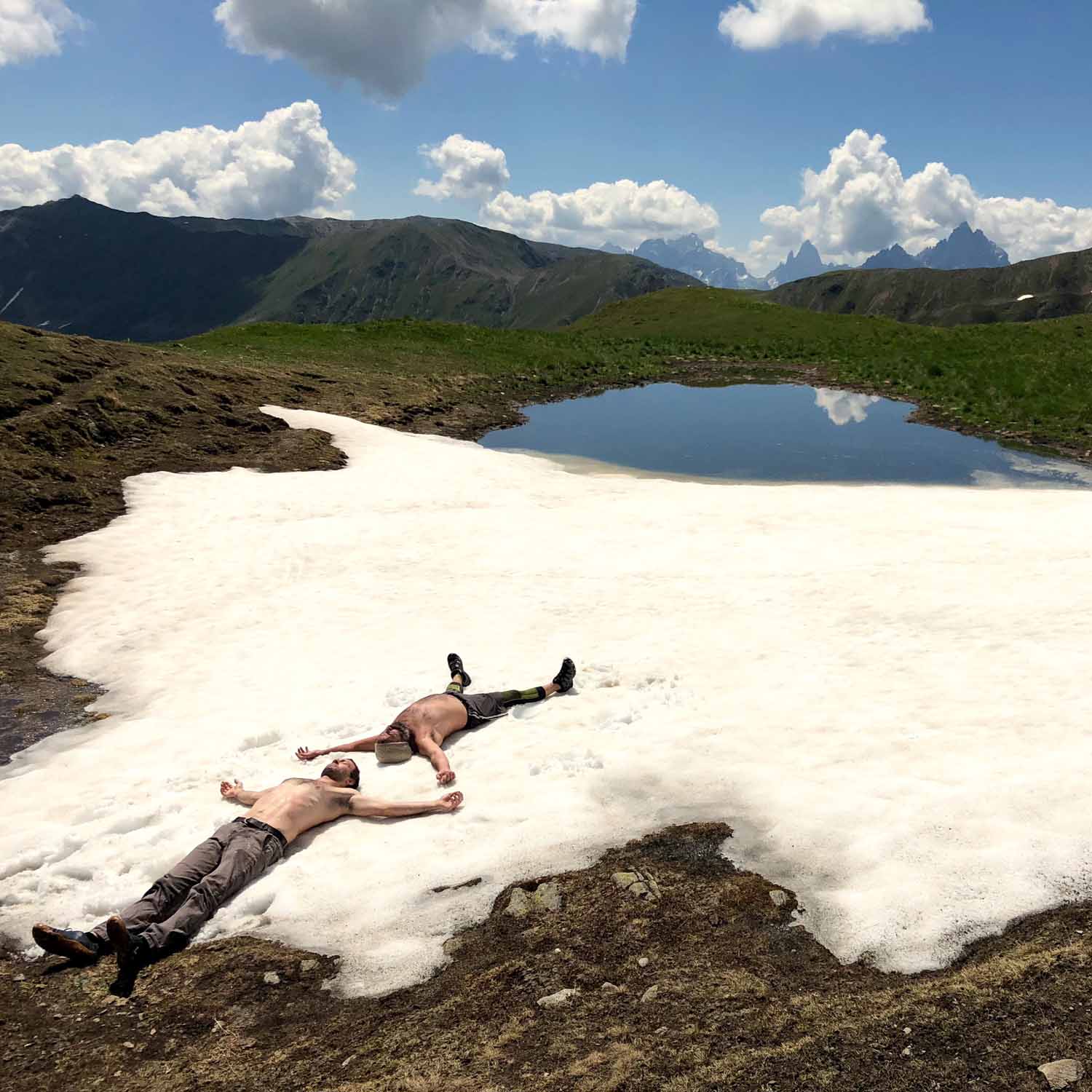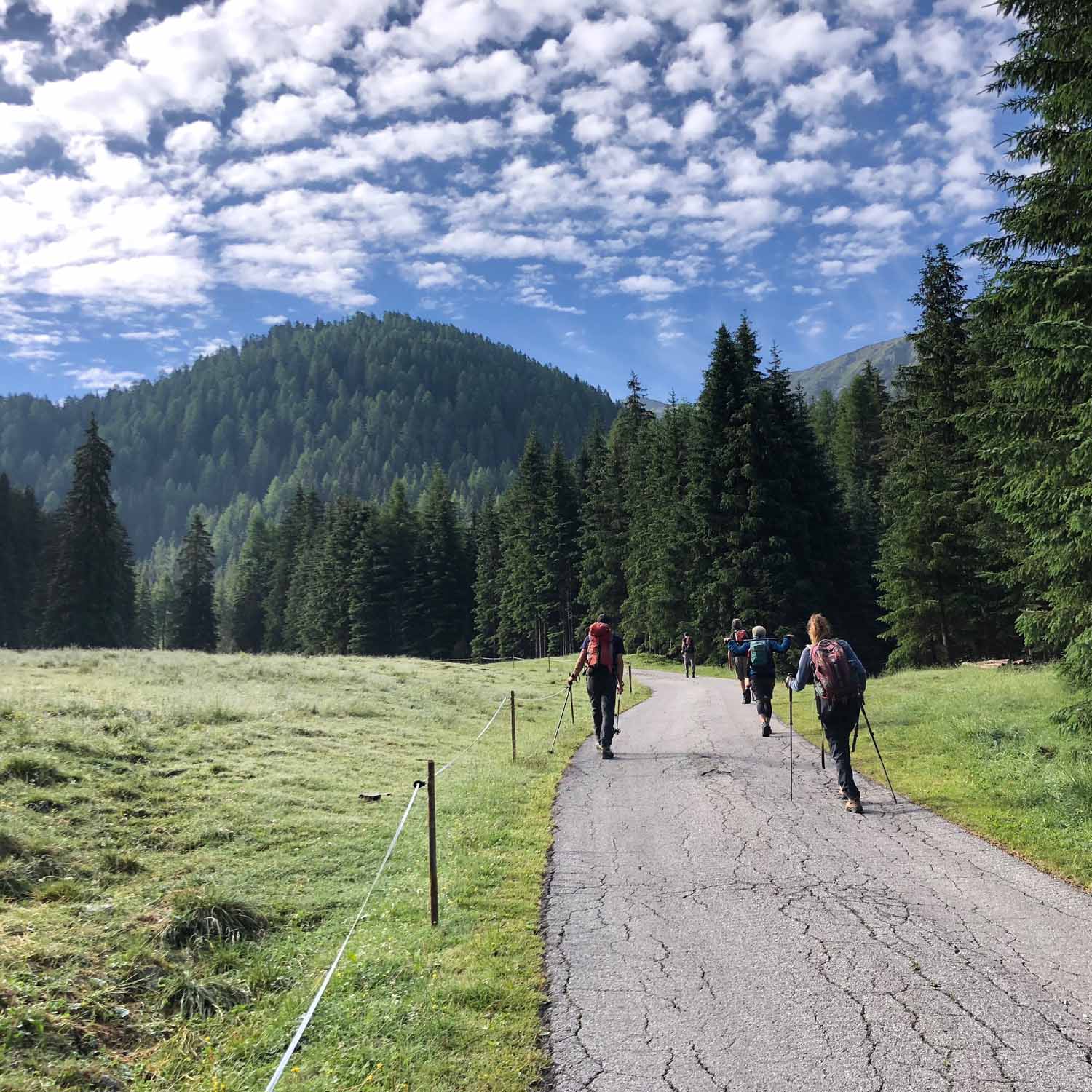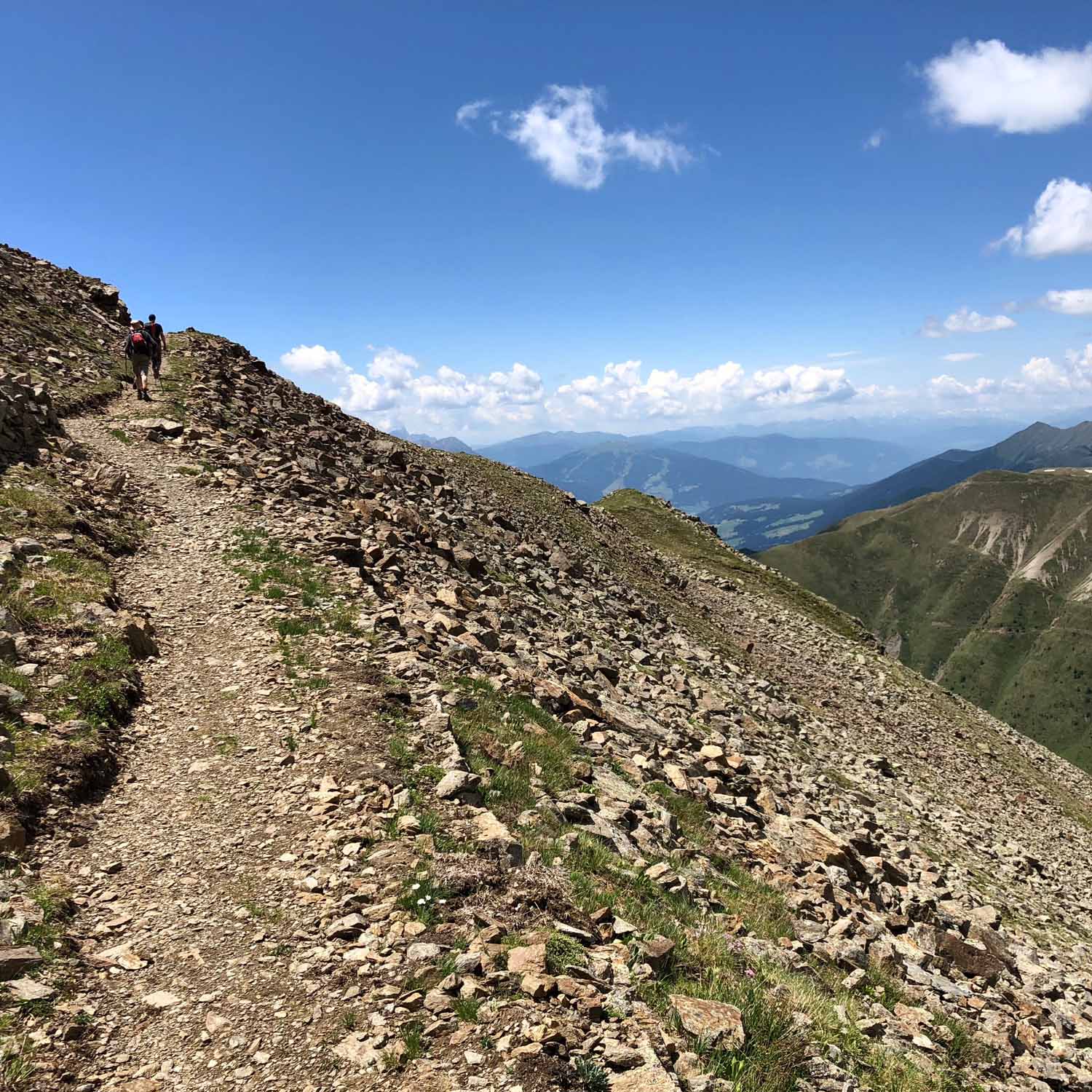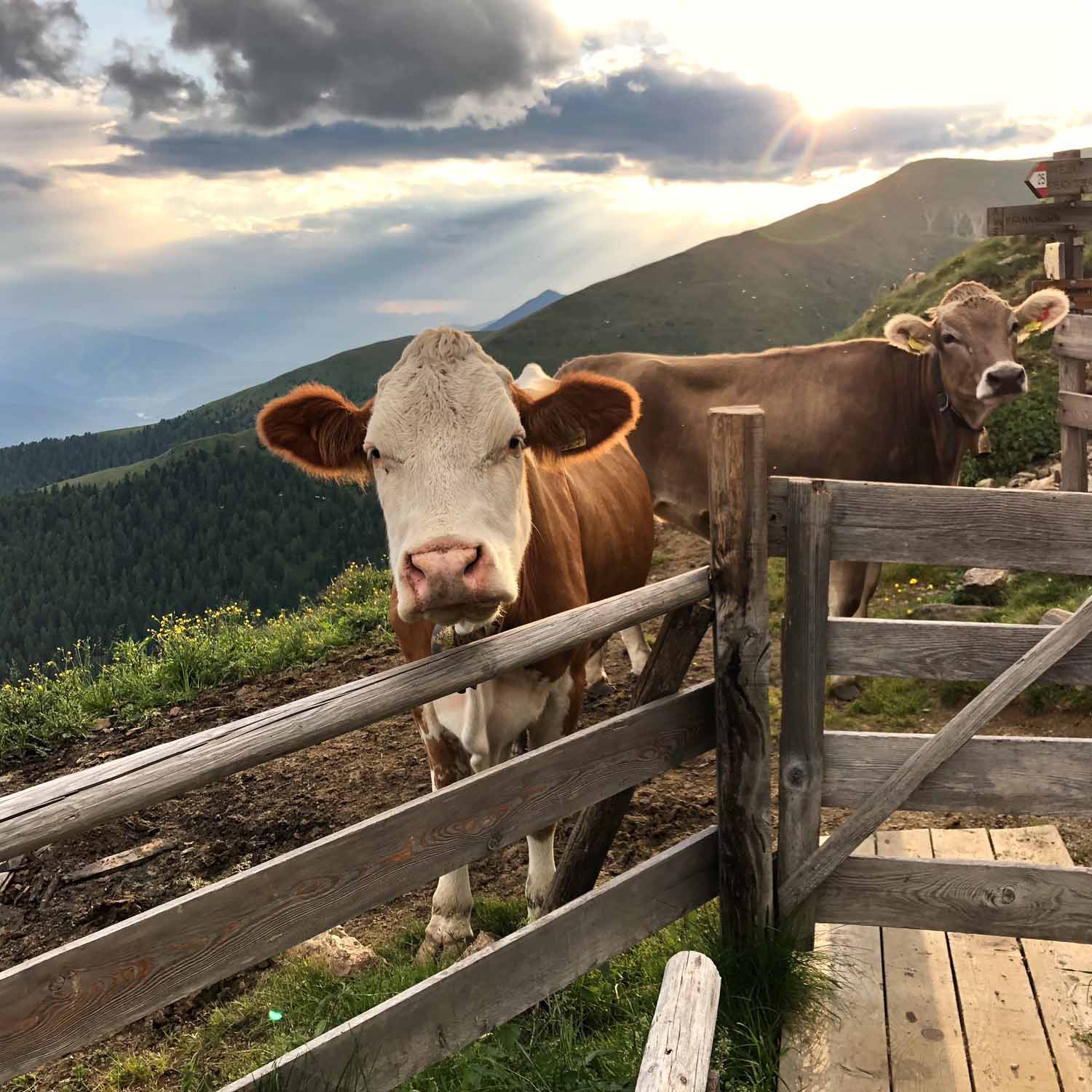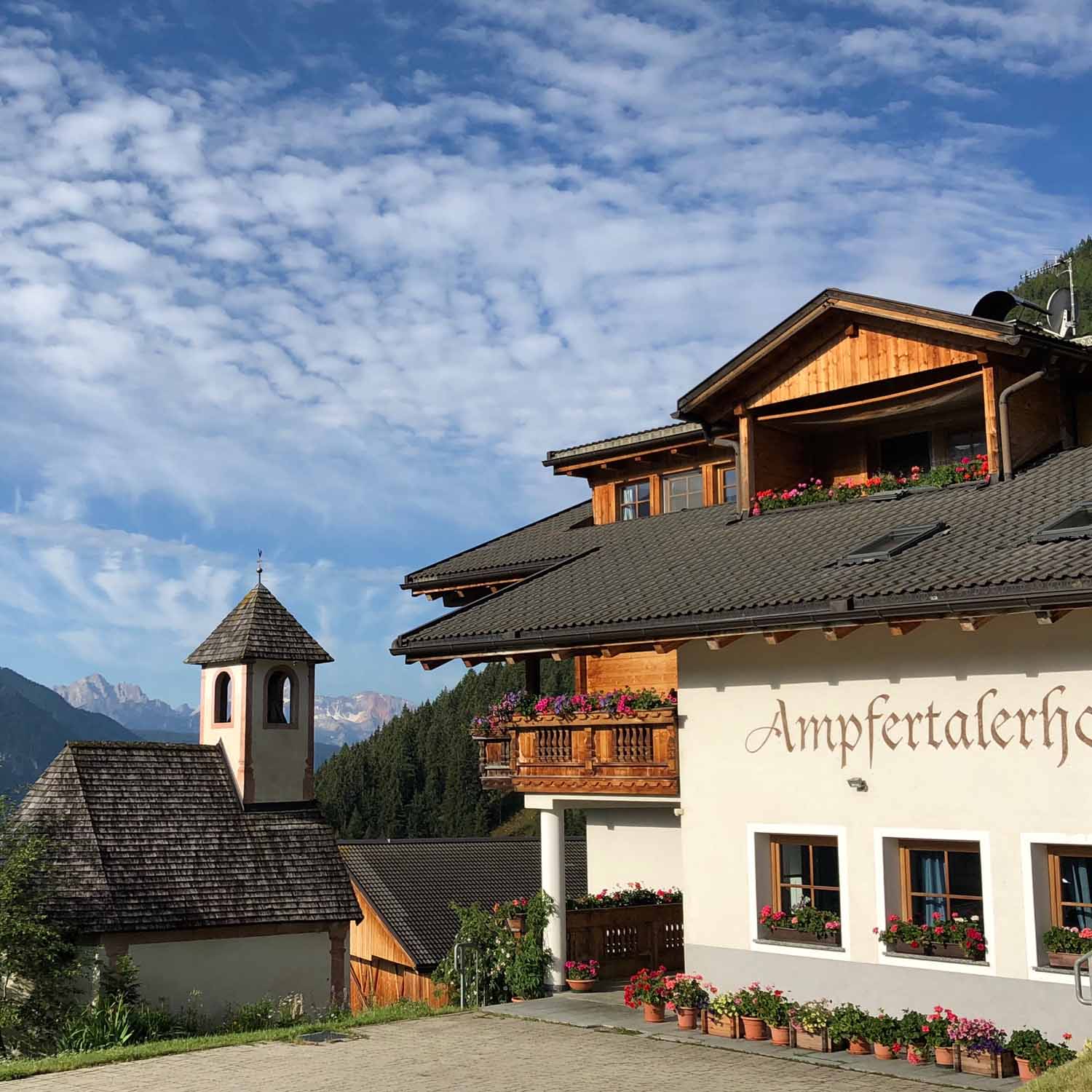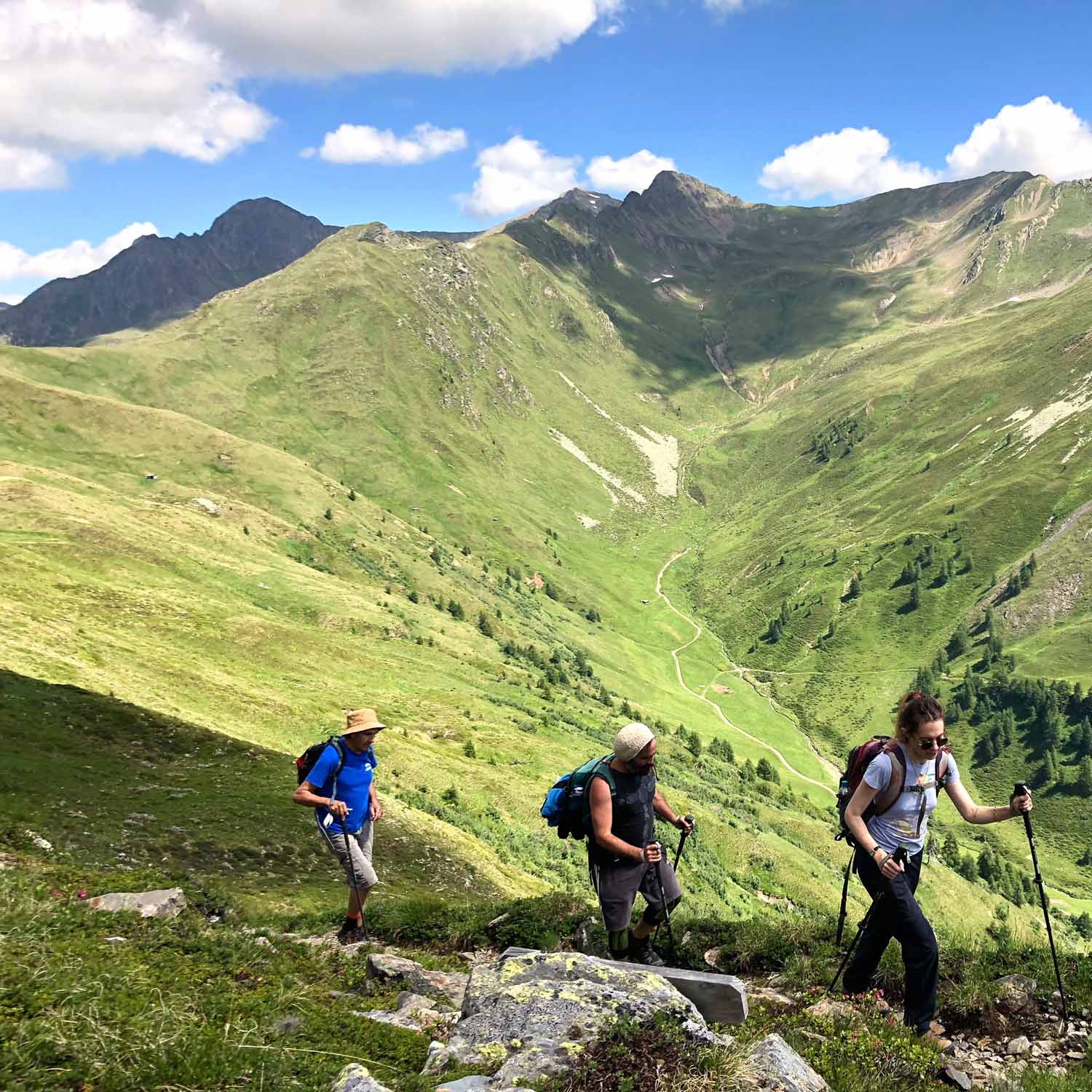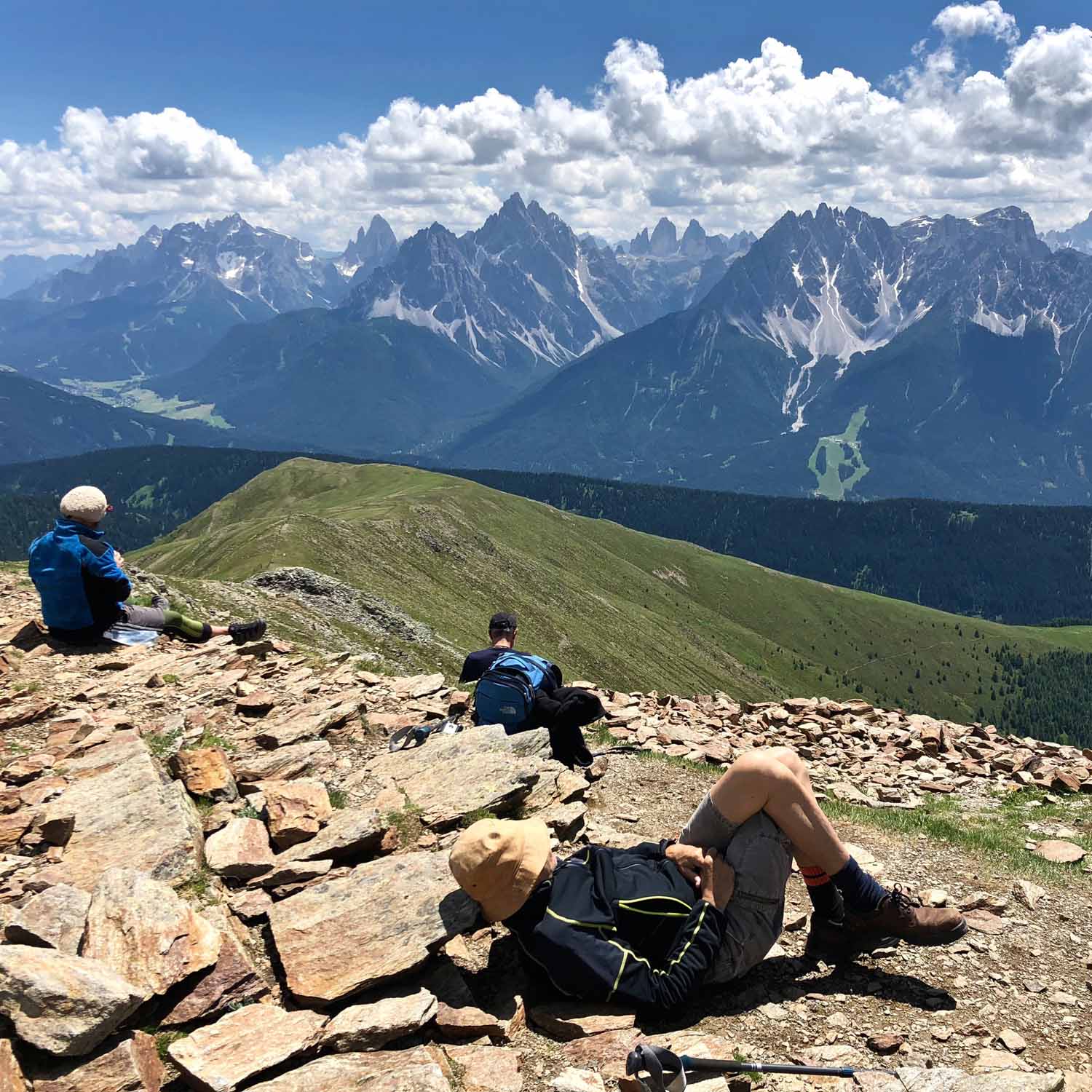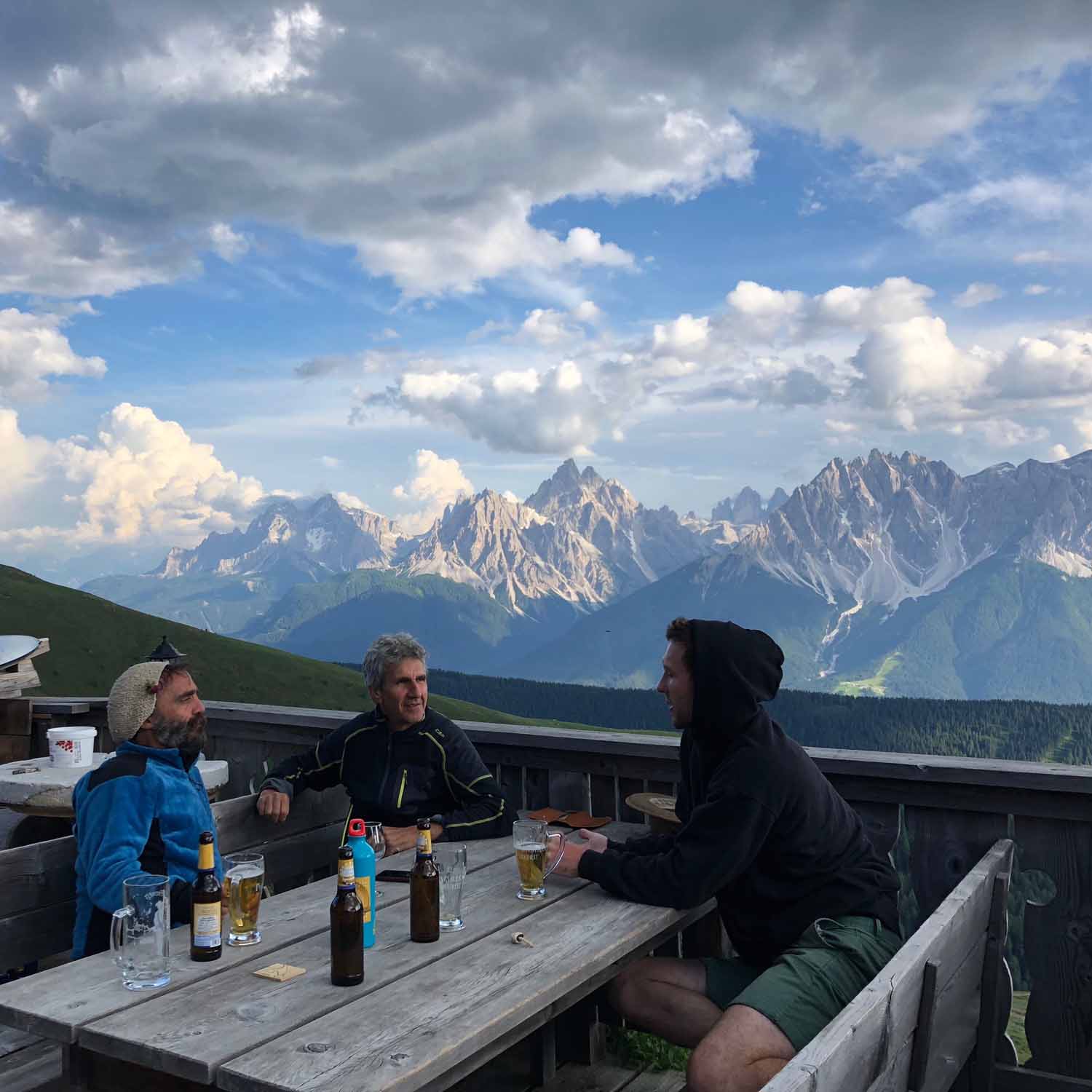Into the Pale Mountains
[Day 2]
by Rudston Steward
e had driven all the way up the spine of Italy, north from Tuscany past Bologna, Bolzano and Brunico, and then along the Val Casies right to the Austrian border. It’s a dead-end valley that comes to a head at the hamlet of Santa Maddalena, where we spent the night; from there you either turn around and drive back the way you came, or ditch your car—and walk up the mountain, into the clouds.
When you spend a lot of time walking up and down mountains you learn that they have distinct characters, akin to personalities: each is a unique expression of geology and geography, a singular set of mineral circumstances evolved over time. Mountains come in different flavours: the particular way air fills your nostrils or tastes on your tongue, the specific sound of footfall over leaves or scree, the quality of light on this summit or that saddle or slope.
The major mountain ranges—the world’s great amphitheaters of stone—are wildly diverse stages upon which very different geological dramas play out. I’ve been lucky enough to hike in the Andes, Himalayas, Alps, Pyrenees, Appalachians, Drakensberg, and Apennines; each setting is distinct. At the same time a single thread unifies the experience of walking in mountains across five continents: the scale of all these ranges lays bare human insignificance. In the mountains you are not in charge—you surrender to forces far greater than yourself. Mountains confront you with the silence of ancient rock. They force you at every step to size up the brief flicker of a human lifespan against the enigmas of deep time.
OR DITCH YOUR CAR—AND WALK UP THE MOUNTAIN, INTO THE CLOUDS
After we set off from Santa Maddalena the morning’s walk was basically uphill all the way, at first through dense pine forests, later above the tree-line over grassy hillsides patchy with multi-coloured lichen. As we reached the saddle at Kalksteinjochl my phone beeped “Welcome to Italy,” which was weird given that we’d been in Italy all morning. We took a rest; a few minutes later my phone beeped “Welcome to Austria.” Which was weird, as I hadn’t moved an inch since being welcomed to Italy moments earlier.
From the saddle we contoured along a series of ridges, dipping and rising all afternoon but essentially maintaining the altitude we’d gained on the morning’s ascent. The sun was brilliant, its heat diluted by the thin, crisp air, bright as a bugle blast. The sky was Tiepolo-blue and immaculate. We walked through Alpine meadows laid out as if by design: a valley of rhododendrons, glistening fuschia; a hillside of blue and then yellow gentians, the latter used locally for grappa; a field of orchids, like small scattered flares; delicate brunellas lining the path with their chocolate scent; a cluster of campanella pelosa, aptly hairy.
We traversed a pocket of snow, a glaring white island stranded in the ocean of green meadows. The temptation to strip down to the waist, plunge into the powder and make summery snow-angels proved irresistible—a DIY spa treatment at 2500m above sea level. A bit further on we skirted a pond, its surface reflecting a jagged line of Dolomitic peaks to the south, pewter-grey on the horizon under a compact mass of ivory clouds. The pool was perfectly still, the air breathless; the reflected clouds seemed to dip below the surface of the water, probing its depths.
Later we crept along a narrow footpath of shale and pebbles, carved out of rock and dropping away so steeply we seemed to be walking on air. As if we were floating up and away, into a giddy Dolomitic realm—completely immune to nation states and gravity. Up here we were free of constraints, beyond the reach of borders and maps. Italy and Austria were irrelevant; the only proclamation that made any sense anymore was “Welcome to the Dolomites.”
COMPLETELY IMMUNE TO NATION STATES AND GRAVITY
A final surge up the flank of Mount Pfannhorn brought us round a corner to a viewpoint: the entire Dolomiti di Sesta range was revealed, lined up before us like a massive cordon of spiky sentries. Pale and formidable. Their peaks were almost milky in colour, as if the upper reaches were fusing with the sky. They got progressively darker lower down towards the ground, to their graphite-grey bases: clutching at the earth, anchored in substrata of rock.
We stood there in silence a while, taking in the view. It felt like we had stumbled into another—archaic—planet. Walked our way into some parallel mountain reality. It dawned on me that we humans have no starring role to play in this theater of geology and stone: we are not needed up here. Then we kept walking, tired and exhilarated, to our refuge below—walking into the view, disappearing into the pale mountains.

